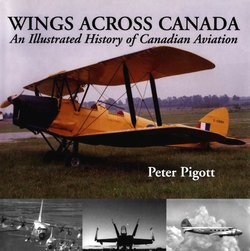Читать книгу Wings Across Canada - Peter Pigott - Страница 8
На сайте Литреса книга снята с продажи.
ОглавлениеARMSTRONG-WHITWORTH SISKIN
In 1922, the Royal Air Force looked to replace its Sopwith Snipes, which dated from the Great War. The air force requirement called for a fighter with an all-metal airframe and a fabric covering, and the Armstrong-Whitworth (AW) Company bid on the contract. It had had some experience during the First World War with its F.K. 8 and F.K. 10 armed reconnaissance biplanes, which were sturdy, if gawky, aircraft. Now, looking to reestablish itself in the aviation world, AW bought the Siddeley Deasy aero engine company and then designed another fighter aircraft.
The company’s first effort was a single-seat wooden sesquiplane with an Armstrong Siddeley Jaguar radial engine. Named the Siskin, it competed for the RAF order with the Gloster Grebe fighter. The RAF bought sixty-four Siskin IIIs in 1924 and four hundred of the model IIIAs and Bs three years later. Manoeuvrable and spirited, the Siskins were popular with the air force, and some were exported to Estonia, where they were still in use when the Second World War began. With this investment, the company expanded into the commercial field with its three-engined Argosy for Imperial Airways.
Armstrong-Whitworth had sent a pair of Siskins to Canada for winter testing, and in 1927, the Canadian government allowed the RCAF to purchase nine Siskins and six Atlases. These were the first new fighter aircraft since the Great War and, at the time of purchase, the latest in technology. The Atlases were for an army cooperation role, but the Siskins were sent to No. 1 Fighter Squadron. When assembled at Camp Borden, three of them were designated as part of the RCAF’s first aerobatic team: the Siskin Flight, which performed at air shows until the mid-1930s. The RCAF was starved of aircraft purchases after that, and the Siskin Flight was the closest that the poor RCAF pilots got to combat conditions. The Siskins laboured through the decade with No. 1 Fighter Squadron at Trenton until the purchase of the Hurricanes in 1939.
Courtesy of the Department of National Defence
Armstrong-Whitworth Siskin at Rockliffe.
